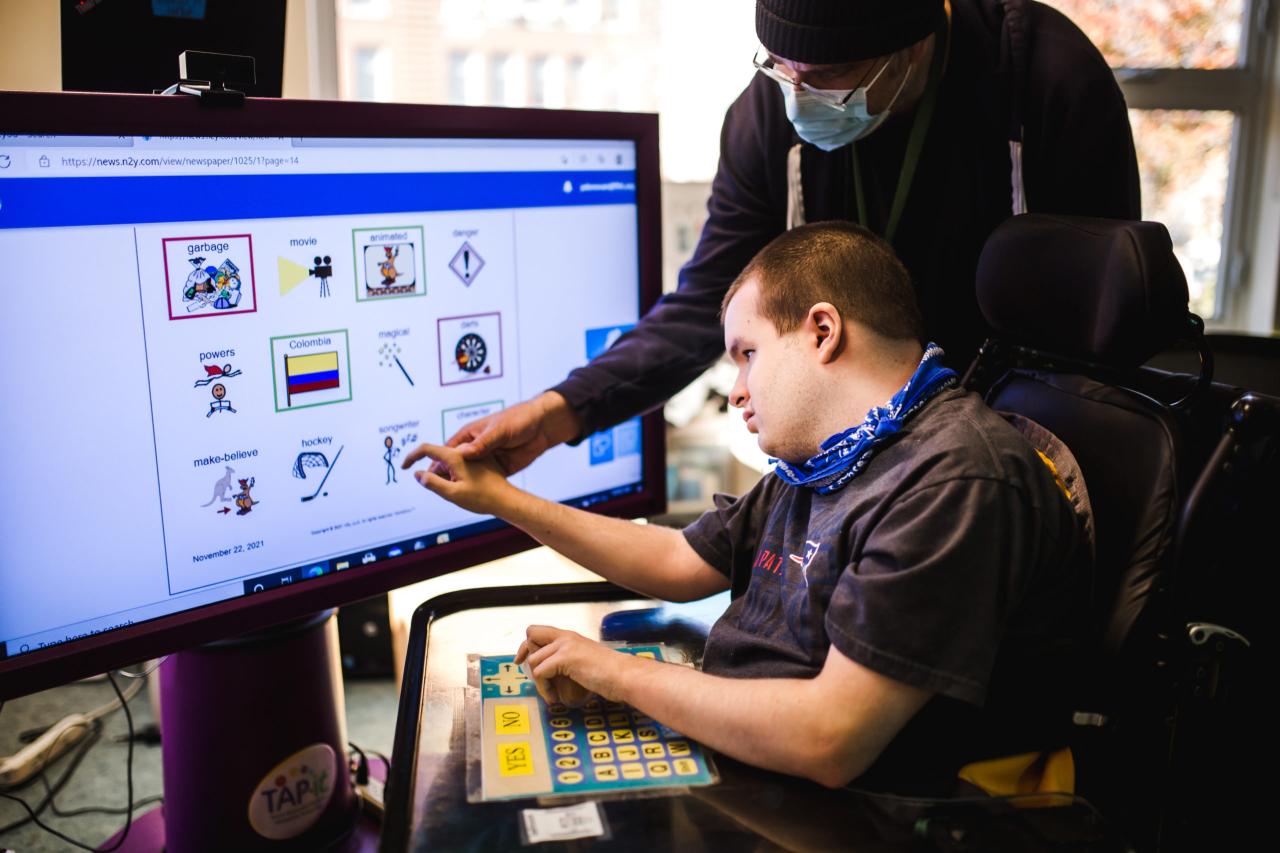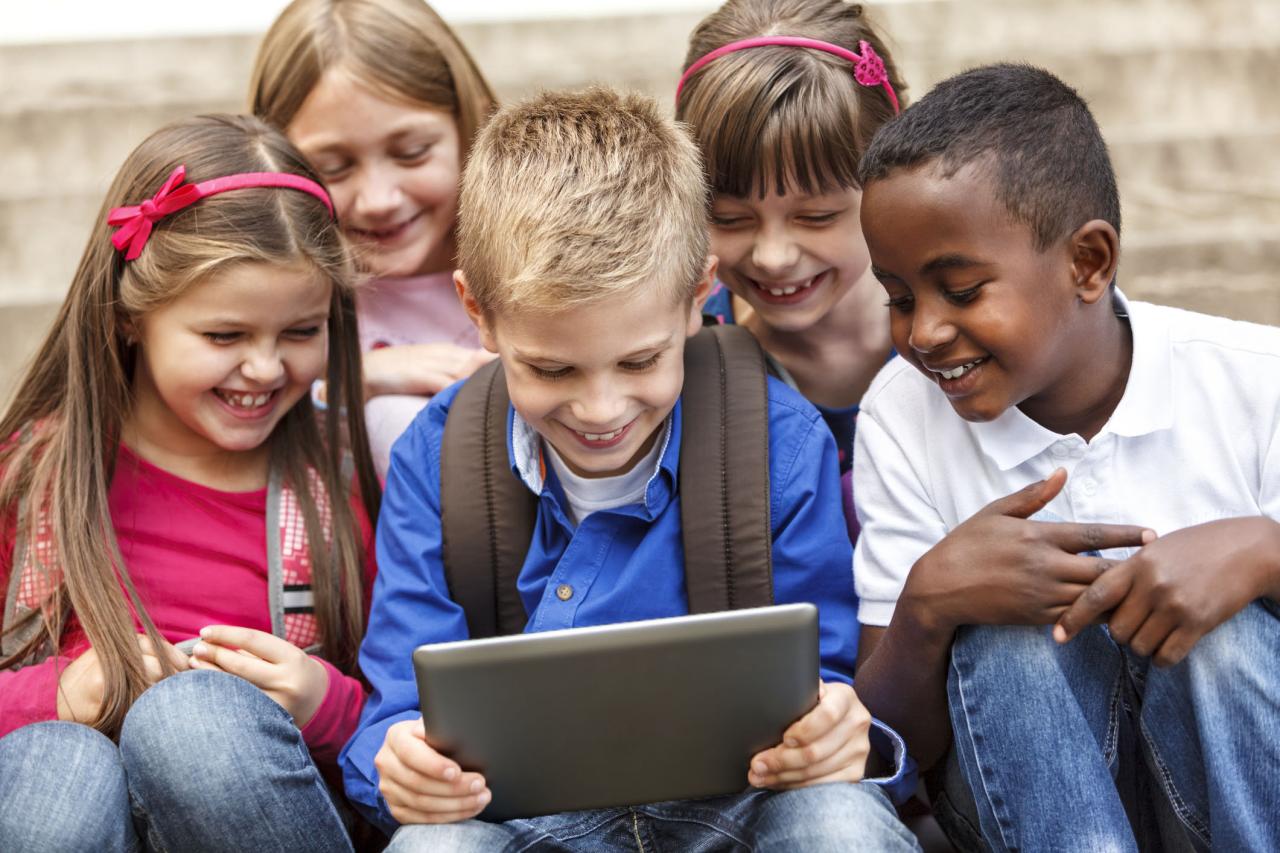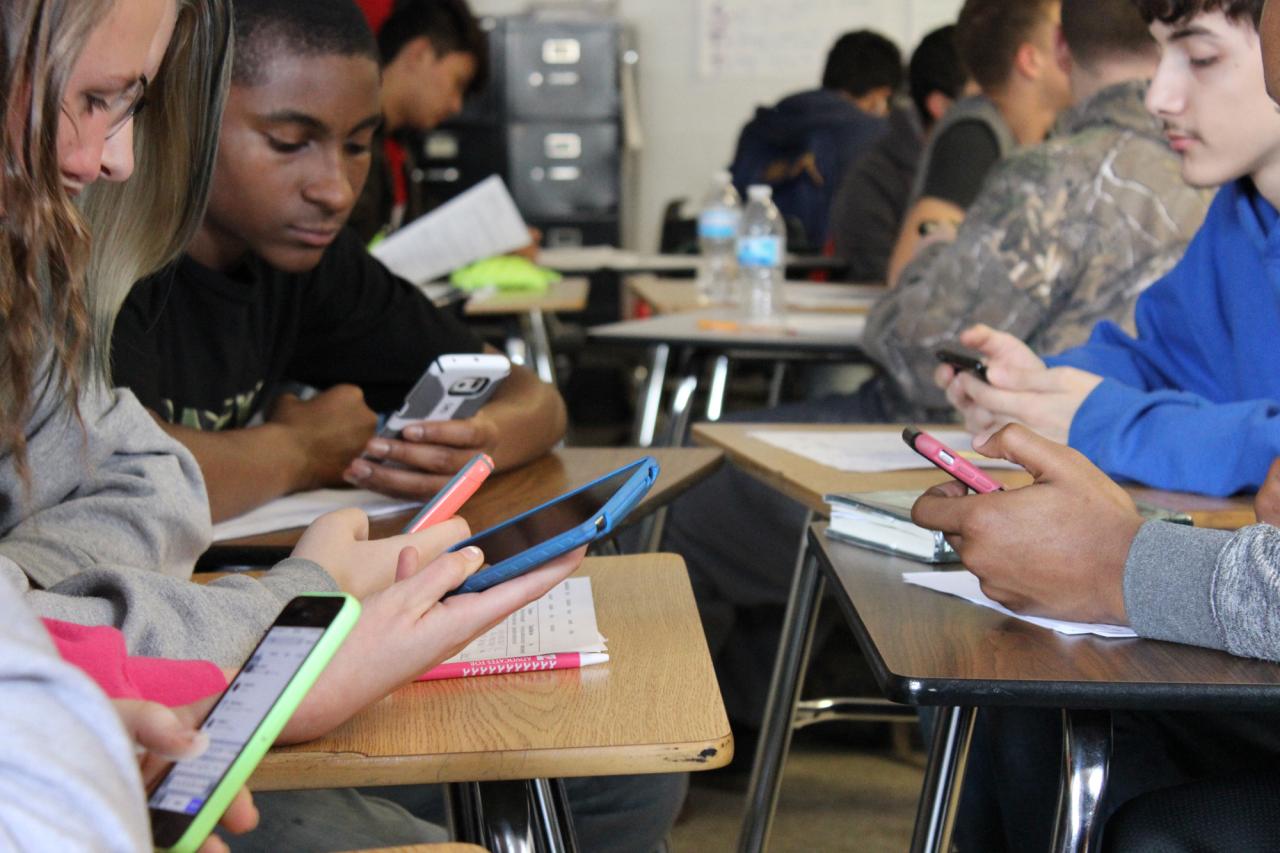The impact of student gadgets on learning has revolutionized the educational landscape, ushering in a new era of accessibility, engagement, and personalized learning experiences. Gone are the days of solely relying on textbooks and lectures; students now have access to a wealth of information and interactive tools at their fingertips.
The integration of technology has transformed learning environments, blurring the lines between traditional and contemporary approaches. From smartphones and tablets to laptops and smartwatches, gadgets have become ubiquitous in classrooms, prompting both excitement and concern about their influence on student development.
This article delves into the multifaceted impact of student gadgets on learning, exploring the benefits, challenges, and strategies for responsible integration. We will examine how gadgets can foster student engagement, facilitate collaborative learning, and provide personalized learning experiences. However, we will also address the potential pitfalls of gadget overuse, including distractions, cyberbullying, and the digital divide.
By navigating these complexities, we can harness the power of technology to create a more effective and equitable learning environment for all students.
The Changing Landscape of Learning: The Impact Of Student Gadgets On Learning

The integration of technology into education has fundamentally transformed the learning environment, shifting from traditional methods to contemporary approaches that leverage the power of student gadgets. This evolution has ushered in a new era of learning, characterized by increased accessibility, personalized learning experiences, and a greater emphasis on active engagement.
The Rise of Technology-Enhanced Learning Environments
The advent of student gadgets has ushered in a new era of technology-enhanced learning environments. Traditional classrooms, once dominated by chalkboards and textbooks, are now equipped with interactive whiteboards, projectors, and wireless internet access. This technological transformation has enabled educators to incorporate a wider range of teaching methods, including multimedia presentations, online simulations, and virtual field trips.
Benefits of Student Gadgets in Learning
In the modern educational landscape, student gadgets are no longer just distractions; they are powerful tools that can significantly enhance the learning process. By leveraging the capabilities of these devices, educators can create more engaging, interactive, and personalized learning experiences.
Enhanced Student Engagement and Motivation
Gadgets can play a crucial role in boosting student engagement and motivation by making learning more interactive and stimulating.
- Interactive Learning:Gadgets offer a wide range of interactive learning tools, such as educational apps, simulations, and virtual reality experiences, that can captivate students’ attention and make learning more enjoyable. For example, students can explore historical sites through virtual reality, conduct science experiments using interactive simulations, or engage in language learning games.
- Personalized Learning:Gadgets enable personalized learning experiences by providing students with access to tailored content and learning paths based on their individual needs and learning styles. Educational platforms can track student progress, identify areas of weakness, and recommend appropriate resources to address these gaps.
- Gamification:Incorporating gamification elements into learning can significantly enhance student motivation. Gadgets can facilitate gamified learning experiences through interactive quizzes, challenges, and reward systems, making learning more engaging and competitive.
Interactive Learning Experiences
Gadgets can transform traditional learning environments into dynamic and interactive spaces.
- Multimedia Content:Gadgets allow students to access and interact with multimedia content, such as videos, animations, and audio recordings, which can make learning more engaging and effective. For instance, students can watch documentaries to understand historical events, listen to podcasts to learn about current events, or view interactive diagrams to visualize complex concepts.
- Interactive Whiteboards:Interactive whiteboards connected to gadgets allow for real-time collaboration and interaction during lessons. Teachers can use these boards to present information, conduct polls, and engage students in interactive activities.
- Augmented Reality (AR) and Virtual Reality (VR):AR and VR technologies can create immersive learning experiences that bring abstract concepts to life. Students can explore historical sites through VR, dissect virtual organs in AR, or learn about different cultures through interactive simulations.
Collaborative Learning and Knowledge Sharing, The impact of student gadgets on learning
Gadgets facilitate collaborative learning and knowledge sharing among students.
- Online Collaboration Tools:Gadgets provide access to online collaboration tools, such as Google Docs, Slides, and Sheets, which enable students to work together on projects, share ideas, and provide feedback in real-time.
- Social Learning Platforms:Educational social learning platforms, like Edmodo and Moodle, allow students to connect with classmates, share resources, and participate in discussions. These platforms can foster a sense of community and encourage peer-to-peer learning.
- Instant Messaging and Video Conferencing:Gadgets enable instant communication through messaging apps and video conferencing tools, which can facilitate group projects, virtual study sessions, and discussions with experts.
Challenges and Concerns of Gadget Usage
While the benefits of student gadgets in learning are undeniable, it’s crucial to acknowledge the potential challenges and concerns associated with their use. The integration of technology in education has introduced new complexities, necessitating a balanced approach to ensure responsible and effective learning.
Gadget Overuse and its Impact on Student Attention Spans and Academic Performance
Excessive gadget use can negatively impact student attention spans and academic performance. Studies have shown a correlation between increased screen time and reduced attention spans, making it challenging for students to focus on academic tasks. The constant stream of notifications, social media updates, and online distractions can disrupt concentration, leading to decreased productivity and lower grades.
Cyberbullying, Online Safety, and Digital Distractions
The digital landscape presents unique challenges to student safety and well-being. Cyberbullying, the use of electronic communication to bully or harass others, is a growing concern. Online platforms can be breeding grounds for cyberbullying, impacting students’ mental health and self-esteem.
Furthermore, the internet poses risks to student safety, including exposure to inappropriate content, online predators, and identity theft. Students need to be educated on safe online practices, including responsible social media use, privacy settings, and how to report cyberbullying.
Digital Divide and Inequitable Access to Technology
The digital divide, the gap in access to technology and digital literacy between different socioeconomic groups, poses a significant challenge to equitable education. Students from low-income families or rural areas may lack access to computers, internet connectivity, or the necessary technical skills to fully utilize digital learning resources.
This disparity can hinder their educational opportunities and create an unfair advantage for students with greater access to technology. Efforts to bridge the digital divide are essential to ensure that all students have equal access to the benefits of technology-enhanced learning.
Strategies for Responsible Gadget Integration

The integration of gadgets into education is a double-edged sword. While they offer immense potential for enhanced learning, their misuse can lead to distractions and hinder academic progress. Therefore, a strategic approach to gadget integration is crucial. This section Artikels a framework for responsible gadget usage, provides guidelines for educators, and explores educational apps and software that promote learning and responsible gadget use.
A Framework for Responsible Gadget Usage
To ensure that gadgets are used effectively and responsibly in educational settings, a comprehensive framework is needed. This framework should encompass various aspects, including policy guidelines, teacher training, student awareness, and technology infrastructure.
- Policy Guidelines:Clear and concise policies should be established regarding gadget usage in the classroom. These policies should address acceptable and unacceptable uses, consequences of misuse, and the role of technology in learning.
- Teacher Training:Educators need to be equipped with the necessary skills and knowledge to effectively integrate gadgets into their teaching practices. This includes training on digital literacy, pedagogical strategies for technology-enhanced learning, and responsible gadget usage.
- Student Awareness:Students should be educated about responsible gadget use, online safety, and digital citizenship. This can be achieved through workshops, classroom discussions, and online resources.
- Technology Infrastructure:Adequate technology infrastructure is essential for seamless gadget integration. This includes reliable internet connectivity, secure networks, and access to appropriate software and devices.
Guidelines for Educators
Educators play a pivotal role in fostering responsible gadget use. Here are some guidelines for incorporating gadgets into lesson plans and activities:
- Align Technology with Learning Objectives:Ensure that gadget use is aligned with specific learning objectives and promotes deeper understanding. Avoid using gadgets merely for entertainment or distraction.
- Model Responsible Use:Educators should demonstrate responsible gadget usage in the classroom, setting a positive example for students. This includes limiting personal device use during class time and focusing on educational apps and tools.
- Encourage Active Learning:Gadgets can facilitate active learning experiences through interactive simulations, collaborative projects, and real-time feedback. Encourage students to engage with the content and participate actively.
- Monitor and Guide Usage:Educators should monitor student gadget use and provide guidance when needed. This includes ensuring that students are using appropriate apps and websites and avoiding distractions.
Educational Apps and Software
Numerous educational apps and software are available that promote learning and responsible gadget use. These tools offer engaging content, interactive activities, and features that encourage critical thinking and problem-solving.
- Khan Academy:A free online platform that provides a vast library of educational videos, exercises, and articles covering various subjects. It promotes self-paced learning and encourages students to take ownership of their education.
- Duolingo:A language learning app that uses gamification to make language learning fun and engaging. It provides interactive lessons, personalized feedback, and rewards for progress.
- Google Classroom:A platform that allows teachers to create assignments, collect submissions, and communicate with students. It promotes collaboration and efficient communication within the classroom.
- Minecraft:A popular video game that can be used for educational purposes. It allows students to build, explore, and create, fostering creativity, problem-solving, and collaboration skills.
Future Trends and Innovations
The integration of student gadgets in learning is a dynamic landscape, constantly evolving with emerging technologies. The future of education holds exciting possibilities, driven by advancements in augmented reality (AR), virtual reality (VR), artificial intelligence (AI), and machine learning (ML).
These technologies have the potential to revolutionize the way students learn, engage with content, and receive support.
Impact of Augmented and Virtual Reality on Learning
AR and VR technologies offer immersive learning experiences by overlaying digital information onto the real world or creating entirely simulated environments. These technologies can enhance understanding, motivation, and engagement in diverse subject areas.
- Enhanced Visualization and Understanding:AR and VR can bring abstract concepts to life, making them more accessible and engaging for students. For example, students studying anatomy can use AR to visualize the human body in three dimensions, while VR can allow them to explore virtual dissections, providing a deeper understanding of complex structures.
- Interactive and Gamified Learning:AR and VR can transform learning into interactive games and simulations. Students can participate in virtual field trips, historical reenactments, or scientific experiments, fostering active learning and problem-solving skills.
- Personalized Learning Experiences:AR and VR can tailor learning experiences to individual student needs and preferences. Students can explore topics at their own pace, access personalized feedback, and receive tailored support based on their learning styles.
The Role of Artificial Intelligence and Machine Learning in Education
AI and ML are transforming education by providing personalized learning experiences, automating tasks, and supporting student success. These technologies can analyze vast amounts of data to identify individual student needs and provide tailored support.
- Personalized Learning Paths:AI and ML can create personalized learning paths for each student, based on their strengths, weaknesses, and learning styles. This allows students to focus on areas where they need more support and progress at their own pace.
- Adaptive Learning Platforms:AI-powered adaptive learning platforms can adjust the difficulty of learning materials in real-time based on student performance. This ensures that students are constantly challenged but not overwhelmed, maximizing their learning potential.
- Automated Grading and Feedback:AI can automate the grading of assignments and provide personalized feedback to students, freeing up teachers’ time to focus on individual student needs.
- Predictive Analytics for Student Success:AI can analyze student data to identify potential risk factors for academic struggles. This allows educators to intervene early and provide support to students who may be at risk of falling behind.
Benefits and Challenges of Emerging Technologies in Education
| Technology | Benefits | Challenges |
|---|---|---|
| Augmented Reality (AR) |
|
|
| Virtual Reality (VR) |
|
|
| Artificial Intelligence (AI) |
|
|
| Machine Learning (ML) |
|
|
Final Summary

In conclusion, the impact of student gadgets on learning is undeniable. While the potential benefits are numerous, responsible integration is paramount. By embracing a balanced approach that prioritizes student well-being, educators can harness the power of technology to create engaging, interactive, and personalized learning experiences.
The future of education lies in embracing innovation while addressing the challenges of technology responsibly, ensuring that every student has access to the tools and resources they need to succeed.
FAQ Insights
What are some examples of educational apps that promote responsible gadget use?
There are many educational apps available that promote responsible gadget use, such as Khan Academy, Duolingo, Quizlet, and BrainPop. These apps provide engaging learning content while limiting distractions and encouraging focused study habits.
How can parents and educators address the issue of cyberbullying and online safety?
Parents and educators can address cyberbullying and online safety by teaching students about responsible online behavior, setting clear boundaries for gadget usage, and monitoring online activity. Open communication, age-appropriate resources, and parental involvement are crucial in fostering a safe and positive online environment for students.
What are some emerging technologies that have the potential to revolutionize learning?
Emerging technologies like augmented reality (AR), virtual reality (VR), artificial intelligence (AI), and machine learning (ML) have the potential to revolutionize learning by creating immersive experiences, providing personalized instruction, and automating tasks. These technologies can enhance student engagement, improve accessibility, and personalize learning pathways, leading to a more effective and equitable educational system.